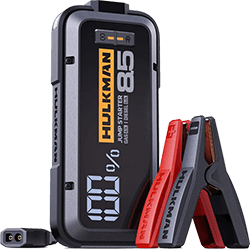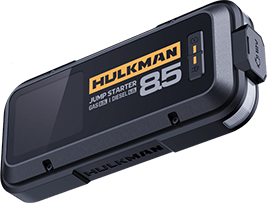Recent Articles
-
Mapping America’s Solar Landscape: Regional and Seasonal Variations November 11, 2025
-
Why Solva Solar Panels Stand Out: From Consumer’s Comment November 06, 2025
-
Unleashing Solar Power: Tips for Using and Maintaining Portable Solar Panels November 03, 2025
Featured Products
note
Powering Your Adventures: Key Factors Shaping Portable Solar Panel Efficiency
Portable solar panels and solar generators are essential for campers, RV enthusiasts, and off-grid adventurers, offering clean energy wherever you roam. Their ability to convert sunlight into power hinges on a delicate balance of material quality, environmental conditions, and clever design. From the core components that set the efficiency ceiling to external challenges like weather and smart tweaks that maximize output, this blog unpacks the key drivers of portable solar panel efficiency.
In this article, we’ll cover:
- Material Core: The Foundation of Efficiency
- Environmental Hurdles: Nature’s Impact
- Design Optimization: Maximizing Potential
- Maintenance: Keeping Performance High
- Practical Tips for Peak Efficiency
- Conclusion
Material Core: The Foundation of Efficiency
The efficiency of portable solar panels begins with their building blocks—the materials and craftsmanship that define their potential. Monocrystalline silicon cells, with their uniform crystal structure, deliver 15-22% efficiency, making them ideal for high-performance portable panels.(energy.gov) Polycrystalline cells, made of multiple silicon grains, offer 13-16% efficiency at a lower cost, perfect for budget setups. Copper Indium Gallium Selenide (CIGS) cells, at 10-15%, excel in flexible panels for camping due to their lightweight, bendable nature. Encapsulant films like POE reduce efficiency losses from PID (potential-induced degradation) in humid conditions, boosting outdoor durability.
Manufacturing precision is critical. Interdigitated Back Contact (IBC) technology, which moves electrodes to the cell’s rear, minimizes shading and boosts efficiency above 26%, ideal for premium portable panels.(sunpower.com) Poor welding in battery strings increases resistance, wasting energy, while bubbles in encapsulant films block sunlight and accelerate aging. Initial light-induced degradation can cut output by up to 2%, with annual aging at 0.55-0.7%, so quality control ensures long-term reliability.
Environmental Hurdles: Nature’s Impact
Portable solar panels face efficiency challenges from environmental factors. Solar irradiance drives power production—low levels (<50W/m²) on cloudy days can halt generation. Tropical regions with high irradiance maximize efficiency, while winter’s short days or overcast skies reduce output. Temperature is a hidden efficiency killer, with silicon panels losing 0.04-0.45% power per 1°C above 25°C. In summer, surfaces can hit 60°C, cutting efficiency by over 10%.(Reddit) Ventilation is vital for portable setups in hot climates.
Shading and pollution cause direct losses. Leaves or snow trigger hot-spot effects, where shaded cells consume power and risk damage. Dust buildup can slash efficiency by 2-15%, especially in dry regions. Regular cleaning, aided by rain in wetter areas, is essential for portable panels in rugged settings.
Design Optimization: Maximizing Potential
Smart design can counter environmental challenges and unlock material performance. Adjustable tilt angles aligned with local latitude ensure maximum sunlight capture for portable panels. Single-axis tracking systems, which follow the sun’s path, can boost efficiency by 20-30%, though they require upkeep for precision. Electrical efficiency depends on minimizing losses—mismatched cell currents or voltages cause up to 8% loss in strings, while inverters lose 2-5% converting DC to AC. Low-resistance MC4 connectors (<5mΩ) reduce waste.(DIY Solar Power Forum)
Maintenance: Keeping Performance High
Consistent maintenance keeps portable panels efficient. Regular cleaning recovers 2-15% efficiency by removing dust and snow, while checking junction box diodes and conductive grids prevents hot-spot damage and circuit breaks. Pairing with devices like the Hulkman Mega, with its 400W solar input and Wi-Fi/Bluetooth monitoring, ensures reliable power for camping or RV trips by tracking performance in real-time. Its ST-25 connector pairs seamlessly with high-efficiency panels like the Solva 100W or 200W, which use SunPower monocrystalline IBC cells with ≥23.4% efficiency and waterproof fabric for rugged durability.
Practical Tips for Peak Efficiency:
Material Choice: Choose monocrystalline or IBC cells for high efficiency; CIGS for flexible, lightweight panels.
Environmental Adaptation: Use adjustable mounts and clean regularly to combat shading and dust.
System Optimization: Pair with low-loss connectors and smart monitoring for peak performance.
Conclusion
Portable solar panel efficiency depends on materials, environment, and design. High-quality monocrystalline or IBC cells, robust environmental management, and smart optimization unlock their full potential. Whether powering a campsite or an off-grid expedition, understanding these factors ensures top performance. The Hulkman Mega, with its 576Wh NCM battery and ≤15ms UPS switchover, enhances reliability when paired with Solva panels, delivering clean energy from snowy trails to high-altitude adventures.






















